Description
Philippe Gaumont (22 February 1973 – 17 May 2013) was a French professional road racing cyclist. He earned a bronze medal in the 1992 Summer Olympics, 100 km team time trial. In 1997 he won the Belgian classic Gent–Wevelgem and he was twice individual pursuit French national champion, in 2000 and 2002. In 2004, Gaumont quit professional cycling and later ran a café in Amiens.
Gaumont was well known for having confessed to extensive doping and explaining a lot of the tricks of the trade. Gaumont gave a series of interviews and wrote a book, Prisonnier du dopage (“Prisoner of doping”) in which he explained doping methods, masking methods, the use of drug cocktails such as the pot belge for training and for recreation, and how the need to make money makes racers dope themselves. In April 2013 he suffered a major heart attack and was reported to be in a coma. On 13 May 2013, several news sources reported his death, but according to La Voix du Nord he remained in an artificial coma, though he had suffered brain death. He died on 17 May 2013.
Doping
Gaumont began his professional career in 1994 in the Castorama team. In 1996 he joined the GAN team and tested positive for nandrolone in two races. He joined Cofidis in 1997 and stayed there until the end of his career. In 1998 he tested positive twice for the nandrolone drug but obtained that the case was dismissed. A year later a blood test conducted in the “Docteur Mabuse” justice case showed he was positive for amphetamines.
In 2004, he was interrogated by French police and justice in the inquiry for the Cofidis doping case. He declared that he had repeatedly and consistently used doping products, including EPO, since the beginning of his professional career. He then said that he thought that 95% of professional racers doped themselves and expressed very strong doubts that a racer could win a major tour, such as the Tour de France, without doping. As a result of this case, he quit professional racing.
Gaumont gave details in his book such as how to avoid being tested positive for corticoids: how, for instance, to irritate one’s testicle sac using salt in order to provoke a rash and obtain a prescription for some corticoid cream. Since urine tests do not distinguish between (legal) corticoid applied as creams, with a prescription, and (illegal) injections, such prescriptions are used to mask doping.
From Wikipedia: https://en.wikipedia.org/wiki/Philippe_Gaumont
***********************************
Philippe Gaumont: The life and times of an enfant terrible
Philippe Gaumont was the enfant terrible of French cycling. A self-confessed doper and hell-raiser, he rode fast and died young, at age 40, on May 17. This article originally appeared in the August issue of Procycling Magazine
Between one snort of Stilnox and the next, on their private clouds of addled euphoria, teammates at Cofidis used to mutter to each other that Frank Vandenbroucke and Philippe Gaumont were both headed for an early grave.
Gaumont himself used to wonder how long youth would buffer his excesses. In 2005, newly retired, he told Paris Match that someone could do a line of coke right in front of him, and he would no longer even be tempted, and yet he also admitted that he was afraid. Even on the glimmering forecourt of the pro peloton, Gaumont had had a chassis that could draw swoons, but he also knew that under the bonnet was an engine he had been over-revving for nearly a decade.
Eight years later, Gaumont’s fears had been realized. He lay unconscious, incurable, in a hospital bed in Arras, northern France, after a heart attack at home three weeks earlier.
Sitting by Gaumont’s bedside was an old friend. Erwann Menthéour and Philippe Gaumont had met when they were teenagers, two kids, in Menthéour’s words now, “full of life and full of hunger”. For a couple of years in the early 1990s, they had cleaned up on the French Espoir scene, with Menthéour unbeatable in time-trials and Gaumont sensational in every other discipline. Including, Menthéour says, the art of seduction. “I have so many great memories of Philippe, but I’ll certainly never forget the Junior Worlds in Colorado Springs in 1991. We totally messed up our team time trial…but Philippe and I became world champions at pulling women.”
But that day in Arras, by Gaumont’s bed, Menthéour’s nostalgia was overtaken by bitterness. The names and faces of other men laid to waste, the human toll of an era when a lot was made of the damage done to professional cycling – but not enough of the sport’s schizophrenic morals and the damage they did to its protagonists – spooled across his mind’s eye. Vandenbroucke, of course, but also Marco Pantani, José María Jiménez, and other, less celebrated casualties like Valentino Fois and Luca Gelfi, plus many others who are still suffering in silence.
Perhaps it was easy or glib to suggest that professional cycling – more than any other poison – had ruined these men, but in his four seasons as a pro Menthéour had seen too much, in too sharp a focus, to be persuaded otherwise. In those four years, the interests and intellect that would later bring him success as a novelist and singer-songwriter already made Menthéour a marginal figure. In March 1997 he and the Italians Luca Colombo and Mauro Santaromita had earned a place in sporting history as the first athletes ever to fail hematocrit tests, and months later Menthéour announced his retirement, aged 24, after crashing out of the Tour de l’Avenir while wearing the yellow jersey. The following January, he lifted the lid on the drug-infested cesspit that professional cycling had become, first in a radio interview, then a year later in a book, to the derision and outrage of both former colleagues and the press.
Who knows, maybe even if he could have seen himself as Menthéour saw him that day, his once marvelous physique reduced to a limp, jaundiced shell, Gaumont would have decided that it had all been worth it.
Or perhaps he would not.
Philippe Gaumont was the kind of kid who could have made it in any sport. Therein lies part of the tragedy: had he carried on playing football, he might still be alive – and rich and happy – today. But that career path turned abruptly into a blind alley when, at age 13, in the semis of the Coupe de Picardie, Gaumont missed a penalty, costing Sporting Club d’Amiens their place in the final, and his teammates berated him in the changing rooms after the game. “I’m done with football,” he told the coach the next day. His father, a manual laborer at Proctor & Gamble, was disappointed, but soon Gaumont’s mother, who worked in a bookshop, would be happily collecting the bouquets that he brought back from bike races every weekend, and considering lucky herself that Philippe wasn’t out drinking and taking drugs like some of his peers.
She would be less enthusiastic about her son spending less and less time in the classroom – and more and more time on the bike – but any misgivings were set aside when Gaumont, still a teenager, was selected for the 1992 French Olympic team in the four-man, 100km time trial. That a rider so young had been picked for such a brutal race, on such a prestigious stage, was already extraordinary; that he could inspire the French quartet to a bronze medal, without any of the drugs supposedly already powering rival teams, was simply phenomenal. Both parents wept tears of joy as he crossed the line.
Gaumont raced à l’eau claire – without drugs – for around half a year. His first banned substance was the corticoid Kenacourt, and he took his first dose on April 27, 1993. He admitted in his autobiography that he somehow felt “proud” to have joined a club. He imagined that he would turn into Miguel Indurain. The effects were a slight anticlimax, but, as he later wrote, Gaumont had “entered a world from which I would never find the exit door”.
In October 1993, he took his first injection of pot belge, and one day in 1995, his team doctor, Patrick Nédélec, left a message on Gaumont’s phone to announce that he had “trouvé la troisième jambe” – “found the third leg”. Of course, he meant EPO. Gaumont took that, too, and by the spring of 1996 was winning races that he was trying to lose, drawing comparisons with Bernard Hinault, yet at the same time losing all grasp of what was talent and what was medicine – and slowly losing his mind.
That 1996 season also saw another first: Gaumont’s first positive test, for nandrolone. As desensitized, as brutalized as he now was, it had a profound effect on him: always an anxious sort, despite his bluster, he felt deeply ashamed. Crucially, though, he also had an explanation – Nédélec had miscalculated Gaumont and his teammate Laurent Desbiens’ “glow time” – and after six months Gaumont was back racing and back on the juice. The next spring, now at Cofidis, he outsprinted some of the best Classics riders in the world to win Ghent Wevelgem. The Cofidis owner, François Migraine, was besotted; soon, a giant poster of Gaumont would adorn Migraine’s office wall.
Also in April 1997, at the Giro del Trentino, Gaumont met a man whose destiny would soon shape his own. Frank Vandenboucke was at Mapei then, already a superstar, but also already disillusioned with the po-faced pragmatism of the Italian team. Just 22, lavishly gifted and wildly narcissistic, later that summer he finished second behind Erik Zabel on a difficult Tour de France stage to Plumelec in Brittany, and cackled in his “friend” Gaumont’s face when the Frenchman couldn’t follow. Far from alienating Gaumont, though, Vandenbroucke’s arrogance reeled him in. Together with the Belgian Nico Mattan, they began training together and fantasizing about racing in the same team once VDB had finally unshackled himself from Mapei. Migraine was the fairy godfather who could make the wish come true. He duly did by signing Vandenbroucke for the 1999 season.
By then, Erwann Menthéour was spitting in the soup, heckling from the boundary rope, but even from afar, he could see that a rare alchemy – as well as a vast arsenal of drugs – was fuelling Cofidis. “Professional cycling is amazingly two-faced world; no one has any qualms about stepping on someone’s toes to get what they want,” Menthéour says. “But for a few months, I think the group that had formed around Frank at Cofidis was truly united. Why? Because Frank crystallized all of their dreams. He was young, he was confident, charismatic and, even if he didn’t have the most imposing physique, he had what we call la grande classe – he could do things on a bike that were out of this world.”
Years later, when VDB and Gaumont were still alive, a Belgian television documentary focusing on Vandenbroucke’s 1999 season would identify Gaumont as the catalyst for his self-destruction. The programme featured Alain Deloeuil, a Cofidis directeur sportif at the time, maligning the “very negative influence that Philippe Gaumont had on Frank” and arguing that, “Unfortunately, I think it was Philippe who sent Frank spiralling towards oblivion.”
What no one seems to question is that Gaumont’s dedication to Vandenbroucke was absolute. One of first things they both did on VDB’s arrival at Cofidis was get matching tattoos, a wolf’s head on their right shoulder. As Vandenbroucke said on the Belgian film: “He was 100 per cent devoted to me – he would even fall for me – and I didn’t have many like that. He also had this incredible physique; on his wheel, you were on holiday. But Philippe was exceptional as a team-mate just as he was exceptional at going off the rails.”
Sure enough, that 1999 spring would see the best and worst of the Gaumont-Vandenbroucke axis: by day, spectacular performances like VDB’s wins at the GP La Marseillaise, the Ruta del Sol, Het Volk and Paris-Nice, and by night – all night – drug-fuelled rampages that only by a miracle didn’t land one or both in prison or hospital.
The Tour of Flanders provided a neat synthesis: Gaumont concluding his latest Stilnox marathon at dawn, then hopping aboard his bike, with VDB tucked in his jetstream, and causing the mighty Mapei team’s capitulation before crashing – maybe due to sleep deprivation – on the Paddestraat. Vandenbroucke went on to finish second behind Peter Van Petegem before obliterating everyone, famously, at Liège-Bastogne-Liège three weeks later.
For a fortnight, in Belgium, Vandenbroucke was God – until one day, when he was at Gaumont’s house, there was a knock at the door and police officers standing on the front step. An investigation into the notorious homeopath-cum-shaman Bernard Sainz, who had recently started treating Vandenbroucke on Gaumont’s recommendation, had led them to Cofidis’ terrible twins. For Vandenbroucke it was the start of what he referred to later as his “descente aux enfers” – his “fall to hell”. It was also the end of Gaumont and Vandenbroucke’s “special relationship”, as the Belgian’s family decided that it was Gaumont who had led VDB astray, and Gaumont who needed to disappear from his entourage.
Again, “La Gomme” felt hurt and humiliated, but again going clean was never really an option. At Cofidis, there were two riders who, as far as he knew, wouldn’t countenance cheating, Janek Tombak and David Moncoutié, and Gaumont regarded them with amused stupefaction. That and an unspoken admiration, for all that, with others, he alternated the roles of court jester and bully.
Rob Hayles, who rode in the team for three years, talks in his recently-published autobiography about coming down to dinner at a training camp in January 2003 and taking the seat opposite where Gaumont was enthroned, holding court “like a medieval king”. “Ah, Rob, you have the honour of sitting in front of me,” Gaumont announced, before leaning forward and whispering, “Let me tell you, Rob, if you finish your career with half the results I have got, you’ll have had a very fine career.”
Hayles’ reply – “Philippe, if I’d done half the gear you’ve done, I’d have twice the results you’ve got.” – brought the house down. Gaumont laughed the loudest of the lot.
Based on a handful of interviews over subsequent years, one could easily assume that Gaumont was muddling through life’s pitfalls towards some degree of maturity, a certain comfort in his own skin – but there were also hints to the contrary. Yes, he had the bar-tabac he had bought in Montdidier in 2000, then the brasserie in Lens, he had his book, he had Elise and his three children, but certain admissions still presaged a sad and premature end. “I’m still a wanker,” he assured 20 Minutes in February 2013. “I’ll never be on the straight and narrow. If I go on a bender, I do it properly. If I want to sleep with a girl, I sleep with a girl. My excesses haven’t finished.”
With the hindsight of a few weeks, we can well romanticise and say that, like Kurt Cobain or Jim Morrison, he lived fast and died young, but there was nothing poetic or glamorous about what Erwann Menthéour saw that day in Gaumont’s hospital ward in Arras.
“I felt and still feel immense bitterness,” Menthéour tells us now, his voice still trembling with emotion, “because I thought about what an expensive price so many people have paid for cycling over the last 20 years. I thought of how, when the Festina affair happened, overnight a group of young men who were just doing what they had to do to earn a living suddenly lost all respectability, all dignity. These were guys riding 35,000 kilometres a year, people were in awe of them, and then all of a sudden they were treated like shits. And somewhere, even if they knew that they were only doing what everyone else did, those guys also had to look themselves in the mirror and feel shame, guilt, because that was what everyone was telling them that they should feel.”
Menthéour takes a deep, heavy breath.
“With all of that shame, is it any wonder some of them went looking for something else, something that brought them some comfort in a life of sacrifices, of constant diets, of physical pain, and then of this vilification? I used to be fascinated by Armstrong, because I thought he was someone whose mental strength made him immune to all of this, but then I read Tyler Hamilton’s book and I realised how fragile Lance was. I don’t think there are many people who got through a career in cycling in those years with their mental health intact…
“Philippe could be cruel, of course he could,” Menthéour continues, “but then Alpha males always are, in any context. He’s not responsible for leading Frank Vandenbroucke astray; we saw later that he was quite capable of doing stupid things without any help. It was just easy to pin the blame on Philippe. Anyway, it doesn’t matter now; the bottom line is that both of them are dead, as are others, and the cycling world acts as though it’s OK because they were just dopers or nutters. The Ministry of Sport in France offered their condolences to Philippe’s family, but the cycling world said almost nothing.
“If Philippe was a former footballer, if he was a former rugby player, he’d be walking around now with people falling at his feet, because he’d have that aura that ex-sportsmen do, except cyclists from that era. Instead Philippe’s gone. And I find that really hard to take.”
***********************************************
Each jersey is one of a kind, please look carefully at the photos to determine condition.
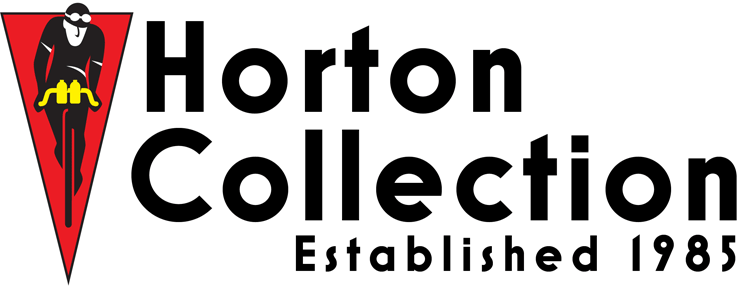
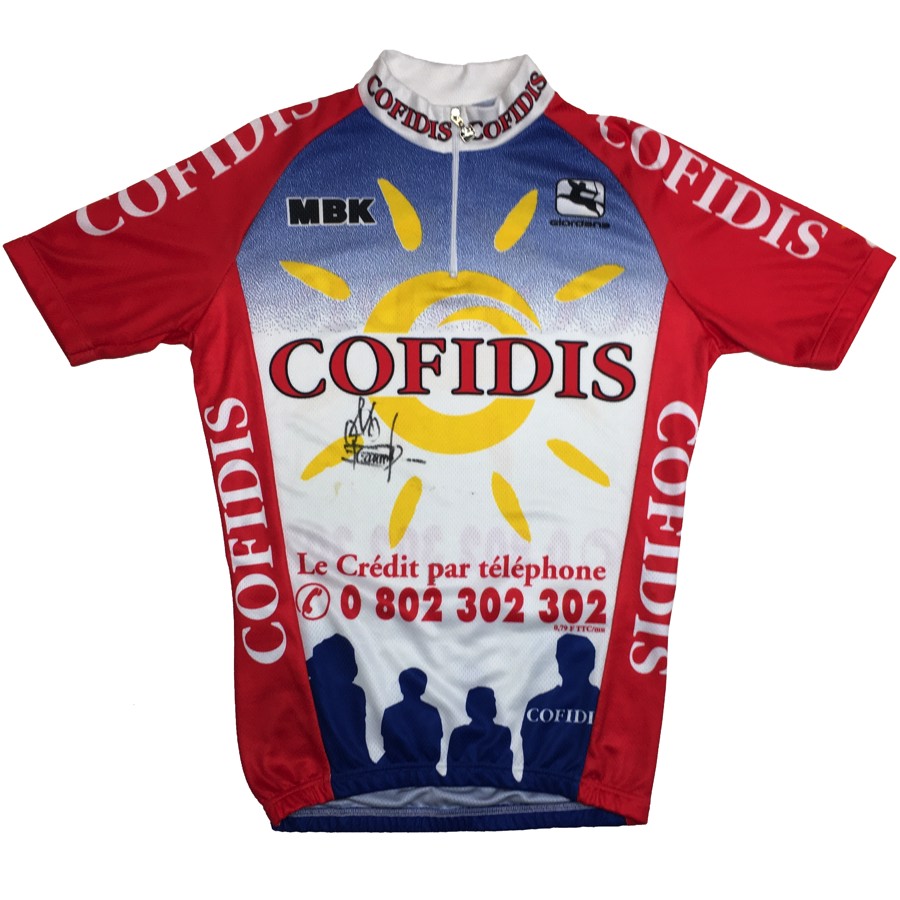
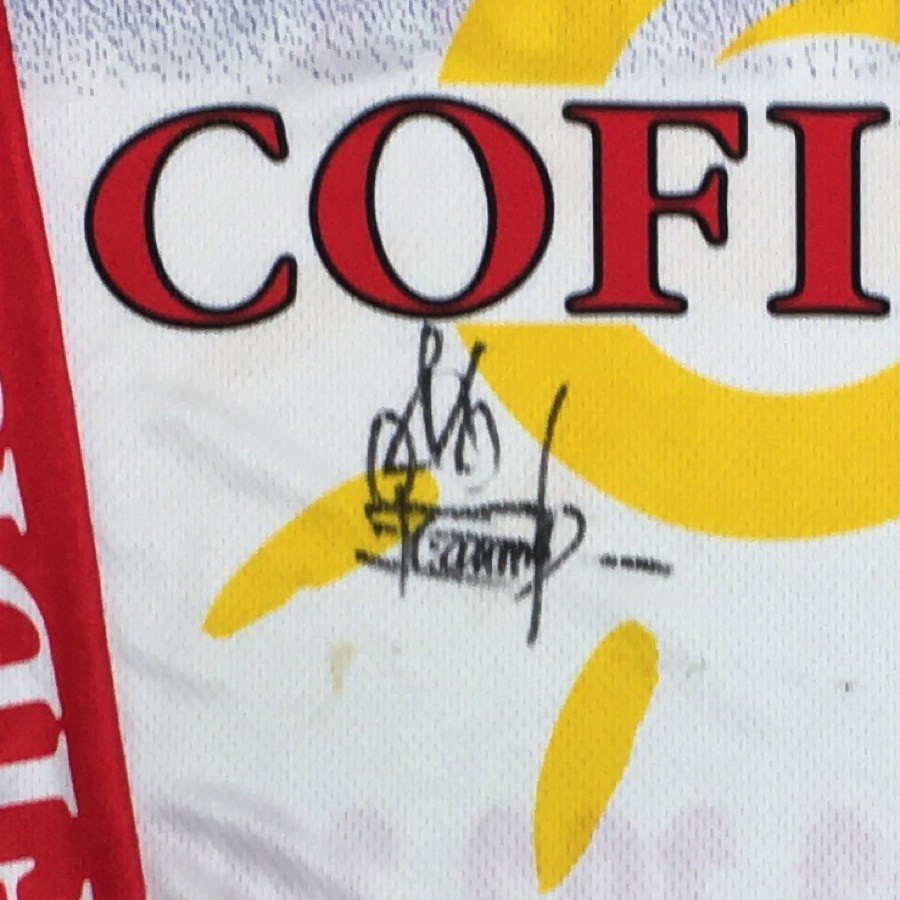
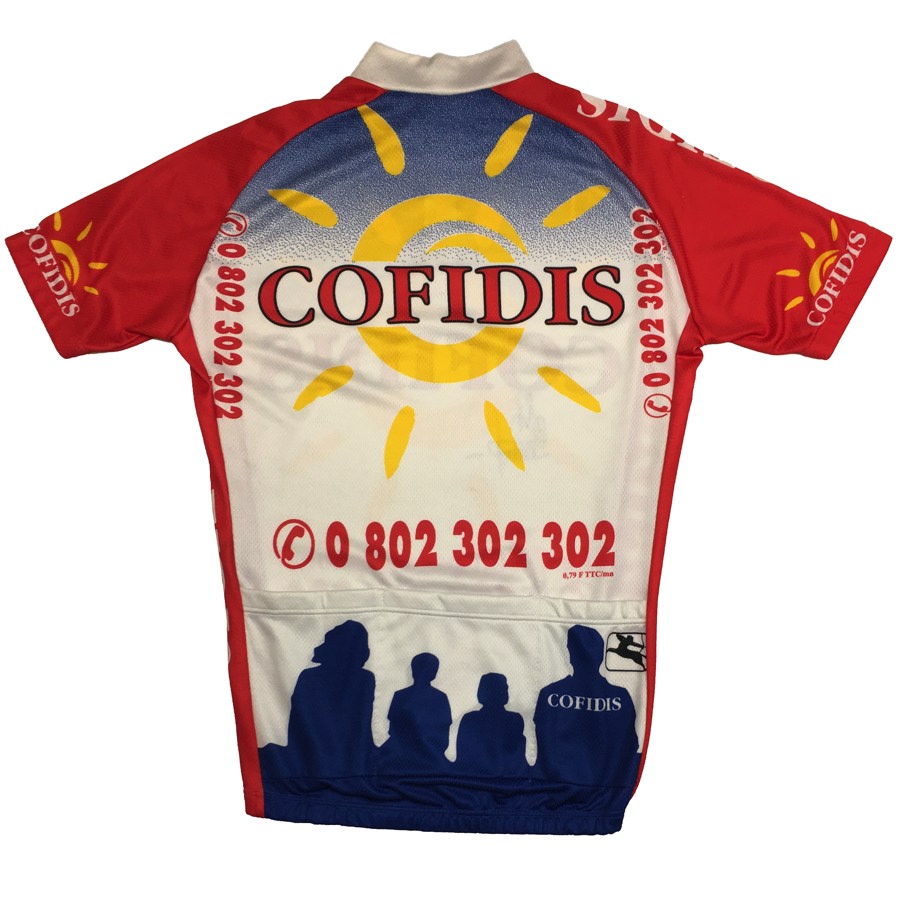
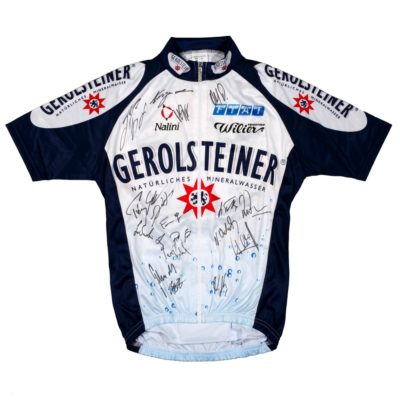
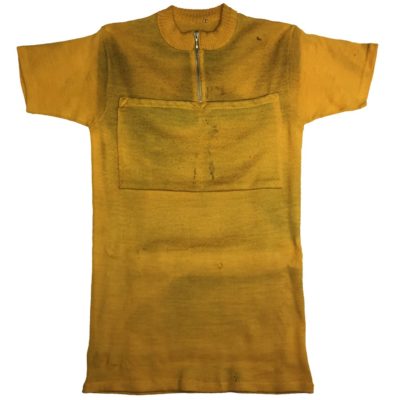
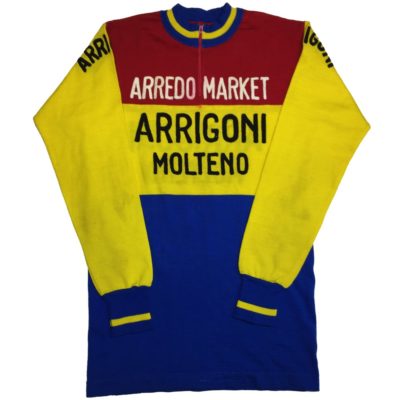
Recent Comments